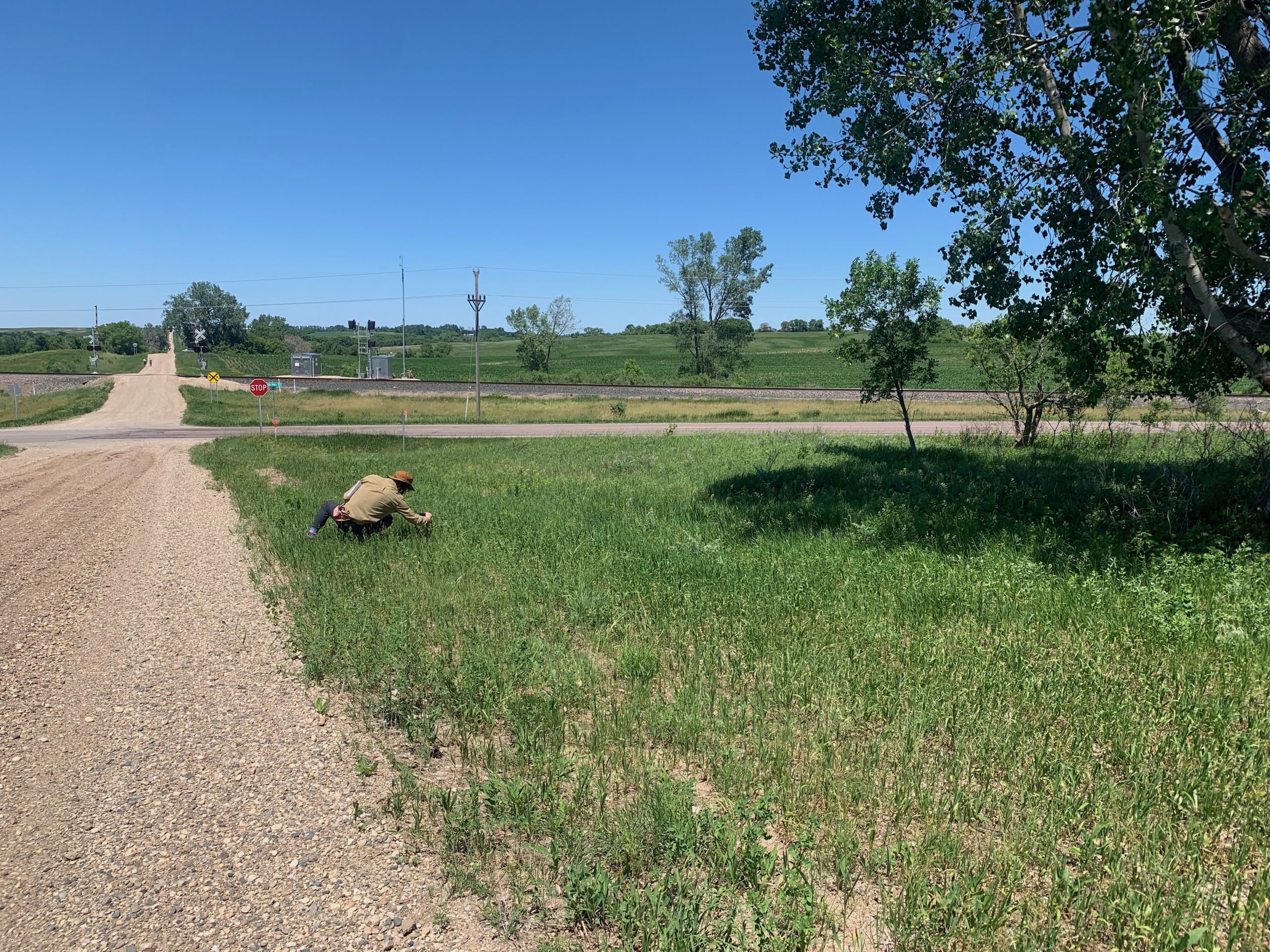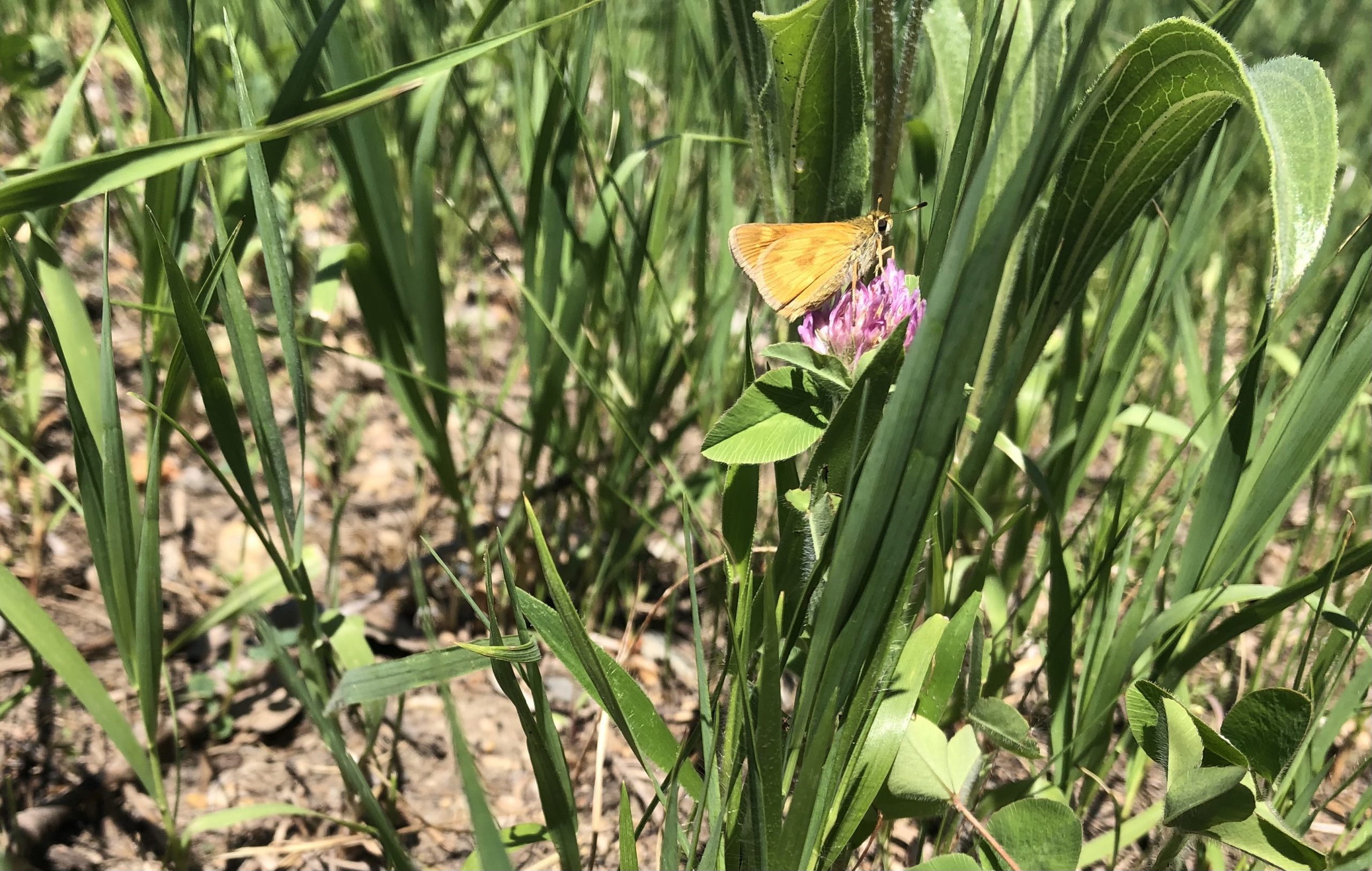After grabbing some lunch, Maris and I headed over to the Loeffler corner remnant to check out the differences between its burned eastern side and unburned western side.

The prairie remnant located on the eastern side of the road is smaller than its counterpart, is uphill from the gravel roadway and has a large tree casting a shadow over much of its surface. The western part of the remnant, on the other hand, is about twice the size, dips downhill from both the gravel road and the highway and is home to a few saplings.
While both sides contained echinacea, we observed more on the western side, including stems from last year, which were absent on the eastern side. Other forbs were also present on both sides, though the species were distinct; on the eastern side we observed alfalfa, wild parsnip and anemones, while the western side only had prairie rose.
In terms of grasses, in both parts of Loeffler Corner we observed about equal quantities of stipa, though on the western side it was much more clustered together. We saw other grasses on both sides as well, such as brome and panic grass.

Our observations seemed to suggest that there was a higher species diversity on the side of the remnant that had been burned. During a rousing discussion on the car ride back to the field house, we talked about how that might have been in part due to more nutrients in the soil due to the burn, and even more open soil overall might be helpful during a seed’s germination.
Personally, my favorite part (Maris concurred) was getting distracted by some awesome butterflies at the site. I wasn’t quick enough to get a picture of a beautiful fritillary that flew by, but I was able to snap a photo of a smaller butterfly, maybe a variety of skipper or dash, sitting on an alfalfa!
Here’s to another day of prairie prowlin’!


Leave a Reply